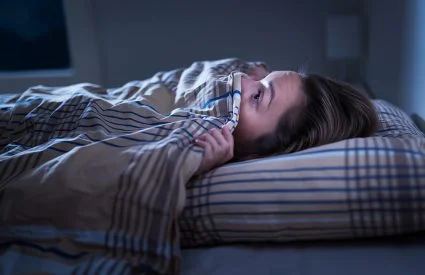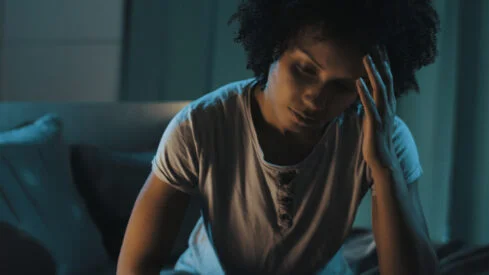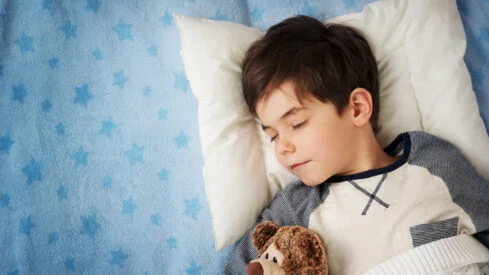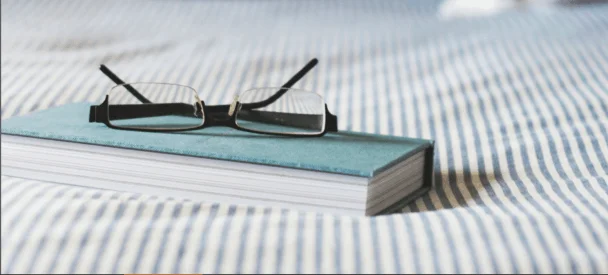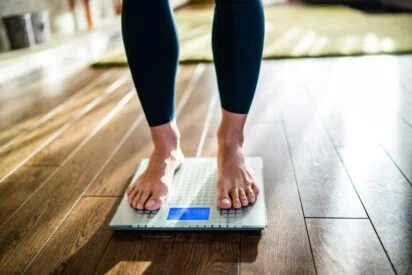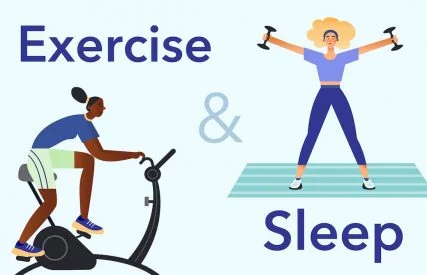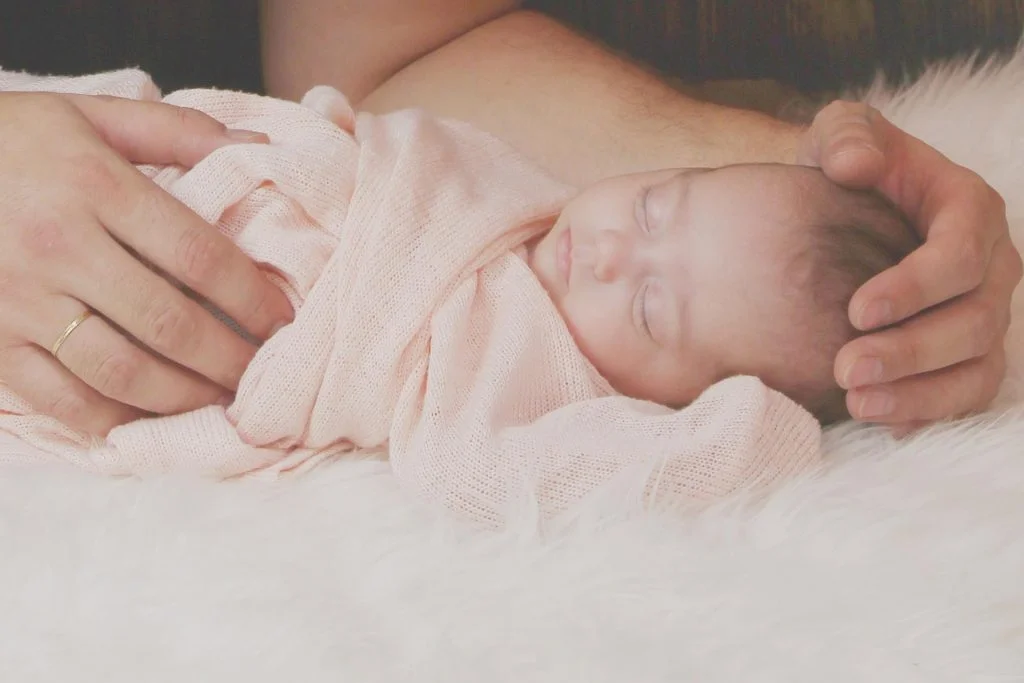
No stranger to controversy, including her parenting choices, Kourtney Kardashian has made headlines again regarding her choice to co-sleep with her youngest son, Rocky — a practice she’s followed since 2009 when her older children were babies.
Co-sleeping is a hotly debated topic due to safety concerns like suffocation and Sudden Infant Death Syndrome (SIDS). However, some believe it strengthens the parent-child bond, and the practice is part of attachment parenting, which emphasizes parental empathy, responsiveness, and constant physical touch. While attachment parenting and co-sleeping have their merits, there are some risks you should be aware of and alternatives to try for safer, connected sleep.
The Risks of Co-Sleeping According to the Experts
Co-sleeping, where parents sleep in the same bed as their baby, is often considered unsafe due to several risk factors, one of which is SIDS, explains Dr. Funke Afolabi-Brown, a triple board-certified pediatric pulmonologist and sleep medicine physician and founder of The Restful Sleep Place sleep clinic.
“There is a risk of accidental suffocation as the child may be smothered by the parents’ body, pillow, or blankets. Infants don’t have the motor skills to move out of dangerous situations,” says Afolabi-Brown. Also, she adds, sharing a bed can increase the baby’s risk of overheating, which is another risk factor for SIDS.
While the actual risk of SIDS for a healthy infant is approximately 0.006 percent when bed-sharing, sleeping in the same room as your baby while they are in their crib reduces the risk by three times — to 0.002 percent. (1) Those risks increase if an infant has health conditions or the sleeping environment is dangerous, including parental alcohol or drug use, use of pillows, swaddling, and smoking.
The risks may seem minimal, but it’s impossible to know if your baby has a genetic or otherwise unknown factor that could increase the likelihood of death. It’s important to weigh the pros and cons with your healthcare provider before making a decision.
What Attachment Parenting Advocates Say About this
Kourtney hasn’t been shy about her parenting style, sharing in the June 27 episode of The Kardashians that she practices attachment parenting, which encourages physical closeness between the mother and infant, including extended breastfeeding and staying physically close, even during sleep.
Advocates feel the relative risk of SIDS is lower than the benefits of co-sleeping, which they say include more peaceful sleep, less crying, stable body temperature and heart rhythms, long-term emotional health, better bonding, easier breastfeeding, and even a lower risk of SIDS, though the evidence for these claims is lacking.
Dr. Afolabi-Brown says that while the choice to co-sleep ultimately is up to each family, even for those who adhere to attachment parenting, it isn’t always the best fit. “While it can improve sleep for some families, the baby’s movements and noises may disrupt sleep for others,” she says.
Attachment Parenting Safe Sleeping Tips
Attachment parenting is a mindful and positive approach to parenting, and you can practice it while reducing the risk of SIDS, whether you choose to co-sleep or not.
“While co-sleeping has cultural and personal benefits for some families, these safety concerns have led to organizations like the American Academy of Pediatrics (AAP) offering recommendations on room-sharing without bed-sharing,” says Dr. Afolabi-Brown. “This means placing the baby’s crib or bassinet in the parent’s bedroom, which allows proximity while reducing the risks associated with co-sleeping,” she says.
Dr. Afolabi-Brown is not a proponent of co-sleeping but understands parents will still make that choice despite the risk. “I realize most families, depending on their cultural beliefs and other values, may choose to co-sleep. That being said, this is not fail-safe, and I would recommend against it,” she says. Here are her suggestions on co-sleeping safely.
- Use a bed with a firm mattress without any gaps where the baby could get trapped. Avoid any heavy bedding or pillow as it can increase suffocation risk.
- Place baby on their back to sleep as this is the safest position to reduce the risk of SIDS.
- Ensure a non-smoking environment, as smoking increases the risk of SIDS
- Before co-sleeping, avoid alcohol, drugs, or medications that cause drowsiness, as they can impair your ability to wake up and respond to your baby.
- Consider using a co-sleeper or bedside crib that attaches to the parent’s bed, allowing the baby to have their own separate sleeping space while still being close to the parents.
The best practice is to avoid sleeping in the same bed. According to the American Academy of Pediatrics (AAP), it is best to share a room with your baby without bed-sharing. This still keeps your baby close, which is particularly beneficial for breastfeeding—a recommended practice for reducing SIDS risk and improving the overall health of both mom and baby.
Ways to practice attachment parenting while sticking to the AAP guidelines:
- Always place your baby on their back to sleep on a firm, non-inclined surface.
- Avoid using soft bedding and stuffed animals
- Keep the room cool and free of covers so that your baby does not overheat.
- Practice responsive parenting by being attentive and responding to your baby’s needs day and night.
- Feed your baby on demand and provide comfort when they’re upset.
- Use a sling or carrier to keep your baby close during the day.
- Consistently offer loving care to establish a secure emotional bond with your baby.
Sources
1. Rachel Y. Moon, Rebecca F. Carlin, Ivan Hand, THE TASK FORCE ON SUDDEN INFANT DEATH SYNDROME AND THE COMMITTEE ON FETUS AND NEWBORN; Sleep-Related Infant Deaths: Updated 2022 Recommendations for Reducing Infant Deaths in the Sleep Environment. Pediatrics July 2022; 150 (1): e2022057990. 10.1542/peds.2022-057990
Afolabi-Brown, Funke. Author interview. July 2024.


